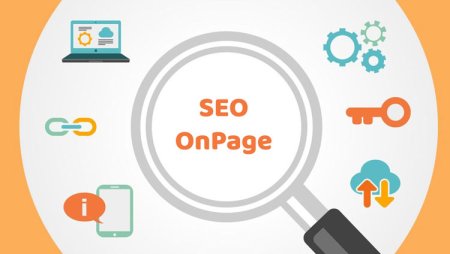

This article provides a comprehensive and in-depth look at Onpage SEO, one of the two indispensable pillars of any search engine optimization strategy. After reading, you will have a firm grasp of the definition, core role and importance of Onpage SEO in building a solid website foundation. The article will also provide a detailed guide and a complete checklist of factors that need to be optimized, from content, keywords, technical structure to user experience. All of this is aimed at helping you proactively control and improve your website rankings in a sustainable way, attracting natural, quality traffic without spending any money.
In the world of SEO, if Offpage SEO is the process of building credibility and reputation "outside" the website, then Onpage SEO is the process of strengthening internal strength, building a perfect "house" right on your website. Onpage SEO is a collection of all the operations to optimize the elements right on the website to improve visibility on search engines and bring the best experience to users.
The main goal of On-page SEO is to make it easier for search engines to read, understand, and index your content correctly. This includes optimizing everything from your content, HTML tags, link structure, URLs, to page load speed. With On-page SEO, you have complete control over every element, making it a strategic, low-risk move that can have a quick impact on your website rankings.
A solid On-page foundation is a prerequisite for the success of an overall SEO strategy. Any external link building efforts will be meaningless if your website has poor quality content, slow loading speed or messy structure. A website with good On-page optimization will easily attract backlinks naturally and convert users more effectively.
An effective On-page SEO strategy is not just about keyword stuffing, but a systematic process that focuses on satisfying user search intent and improving the on-page experience. Below are the key elements that need to be optimized, divided into two main groups: Content & Keywords, and Technical & Website Structure.
Content is the "soul" of a website and is the most important factor in Onpage SEO. It determines whether users find value and stay on your website or not.
In-depth Keyword Research: Instead of just targeting high-volume keywords, modern SEO requires you to understand user intent. There are four main types of intent:
Informational (Information Search): The user wants to learn about a specific topic (e.g. "how to calculate profit margin").
Navigational (Navigation Search): The user wants to find a specific website (eg: "Saco Inc").
Commercial (Commercial Search): Users are researching products/services before purchasing (e.g. "compare MISA and Fast accounting software").
Transactional (Search for transactions): User is ready to make a purchase (eg "register for FPT digital signature").
Create quality content: Content must be unique, valuable and provide useful information to readers. An article of about 1,000 words should use at least 3 images to increase attractiveness and readability. Experts also recommend using semantically related keywords (LSI Keywords) to help Google better understand the context and topic of the article.
Technical factors help Googlebot crawl and evaluate your website effectively.
Optimize Meta Tags:
Title Tag: One of the most important ranking factors. The title should be of reasonable length (around 60 characters), contain the main keyword at the beginning and be attractive to encourage users to click.
Meta Description: Not a direct ranking factor, but an important factor in increasing click-through rate (CTR). The description should summarize the content briefly (under 160 characters), contain keywords, and have a compelling call to action (CTA).
Heading tags (H1, H2, H3,...): Help structure content logically, easy to read for both users and bots. A page should only have a single h1 tag - usually containing the main keyword, h2, h3 tags are used to divide smaller headings
Optimize URL: URL (page address) should be short, descriptive of page content, contain main keywords and use hyphens (-) to separate words.
Optimize images: Images not only make the article more attractive but also an important SEO factor. You need to optimize the file name, use the appropriate format, compress the capacity and especially fill in the alt text to describe the image to search engines.
Website structure and linking:
Website structure: A website structure with a clear hierarchy (e.g. Home > Categories > Posts) makes it easy for users and bots to navigate.
Internal Link: Helps connect pages within the same website, distributes power and keeps users on the site longer.
External Links: Linking to reputable, authoritative sources in the same field will help increase your credibility and expertise in the eyes of Google.
Optimize page loading speed and user experience (UX): A fast loading website is an important factor in retaining users and is highly appreciated by Google. Optimizing Core Web Vitals (LCP, FID, CLS) will significantly improve user experience. The website interface also needs to be mobile-friendly (responsive) to serve all audiences well.
Optimize other technical factors: Make sure the website has a standard robots.txt and sitemap.xml file, and use
Schema markup helps Google display more attractive search results.
On-page SEO is the first and most important step in your journey to achieving high rankings on Google. It’s not just about techniques, it’s about putting the user at the center of every decision. By building a solid foundation, you’ll create a website that’s not only search engine friendly, but also genuinely useful and trustworthy to your readers.
Don’t let your website fall behind. Start today by reviewing all the Onpage elements on your website. If you need a more specific and in-depth roadmap for your business, contact us for comprehensive advice and support to help you optimize your website in the most effective and sustainable way.